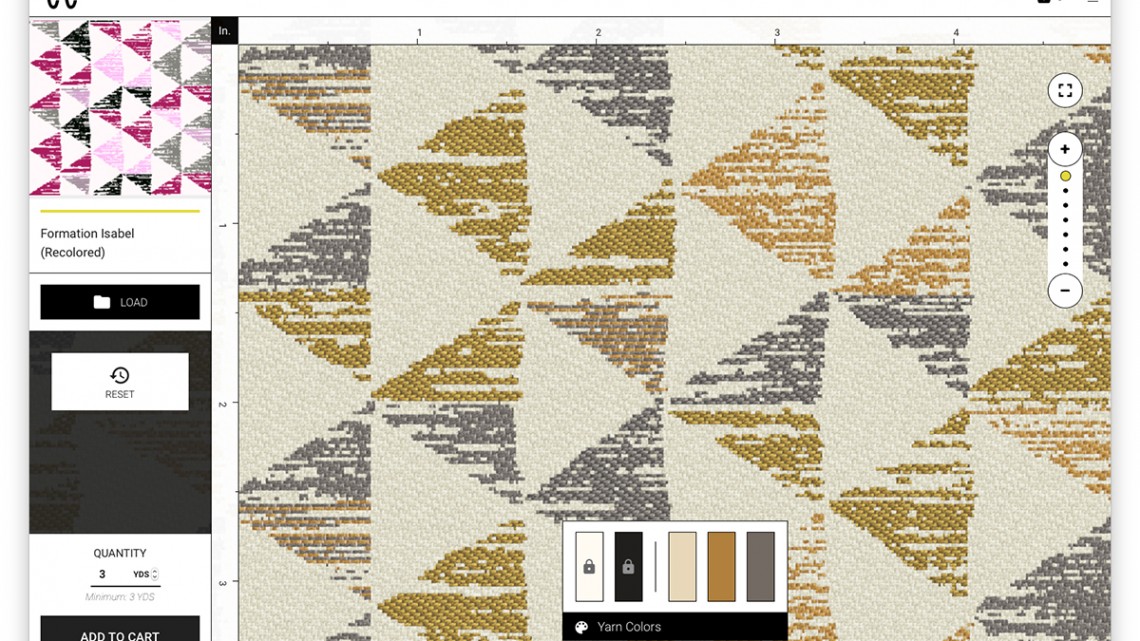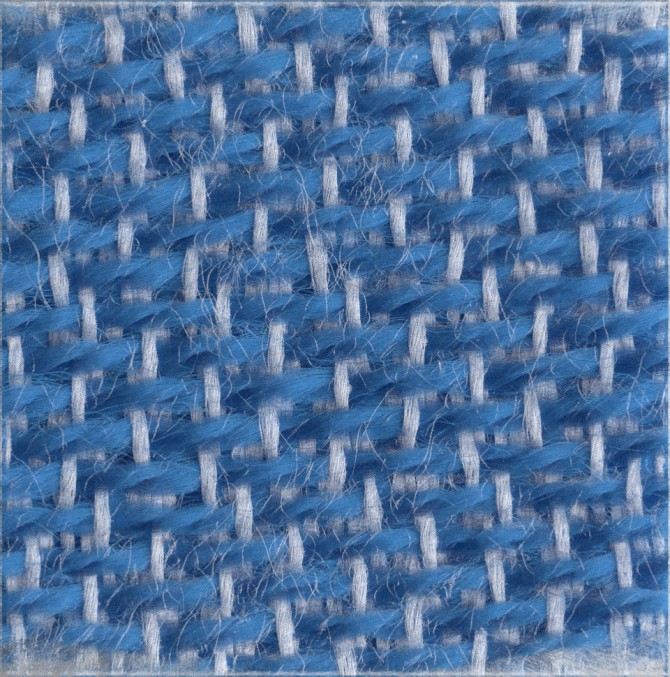
Weft.Design allows users to upload or design the specific pattern, color and weft of the fabric they would like to order.
Digital technology weaves its way into custom design world
By Leslie Morris
Computer science continues to evolve into all facets of our world, including changing even the most traditional arena of textiles manufacturing.
New technology developed by Cornell Professor Steve Marschner and Rhode Island School of Design Professor Brooks Hagan will now allow woven fabrics to be super automated and customized – completely altering the mindset that fabrics can’t be made in custom small batches.
The collaborators began with a vision to open the textile design process to anyone. “We saw an opportunity to provide a way for anyone to put any design into custom woven fabric. You can log into our web application, upload a design, and see a visual preview of the fabric while you change the weave pattern, yarn colors, etc. – and then when you like it you click print,” said Marschner.
Marschner and Hagan have been working on this technology for years – taking inspiration from Marschner’s research for the digital animation industry and also working with Kavita Bala, professor of computer science, and graduate student Shuang Zhao. To get such a realistic rendering of the cloth, they scan samples in a 3-D nano-CT scanner at the Imaging Facility in Cornell’s Biotechnology Resource Center, which is able to produce volume appearance models with extreme detail. “The tech is now fast and accurate enough for us to shift to a virtual product in an industry where appearance, texture and surface quality are key factors for success,” said Hagan.
The researchers founded Computational Textiles in 2015 and received a Small Business Innovation Research grant from the National Science Foundation to bring their website called Weft to market this year. Phase One of Weft is now online, enabling customization of designs available on the site, and by late this year customers will be able to upload their own designs or photographs as well as customize the designs already available on the site. Future design plans include being able to show the custom fabric on 3-D objects like pillows or a chair. The company has agreements with several of the largest textile mills in the United States to produce the designed-to-order fabric.
“This new technology can generate interest, creative activity, and new business opportunities for this US industrial sector. This launch is significant as it represents the first time digital simulation tools have been applied to an ancient manufacturing platform to create easy access for designers,” said Hagan.
Leslie Morris is director of communications for Computing and Information Science.
Media Contact
Get Cornell news delivered right to your inbox.
Subscribe